Invalid Traffic – What Is It and How to Prevent It?
Invalid traffic can be the result of intentional and unintentional bot traffic on your website, as well as accidental user clicks. In the worst case, malicious invalid traffic can damage your website’s reputation, obtain suspension from Google, and create a loss in ad revenue.
In this article, you’ll learn about different types of invalid traffic, how it affects your website, and how to decrease the possible risks of invalid traffic.
What is Invalid Traffic (IVT)?
Invalid traffic (IVT) is an artificial rise in ad clicks and impressions on a website. It’s mostly generated by automated software, also known as bot traffic, and not by real users with a genuine interest in the content.
Invalid bot traffic can be intentional and fraudulent, but it can also result from poor ad placement strategy or intrusive ads as users can accidentally click on them.
General invalid traffic (GIVT)
General invalid traffic (GIVT) is the most common invalid traffic type, and it’s considered the least harmful and easiest to spot. It’s generated by bots and crawlers without the intention to simulate real human activity.
GIVT usually displays non-human behavior, like switching pages every 5 seconds for an extended time.
Therefore, it’s easy to detect, identify, and block by using routine filtration methods with lists of known spiders and bots or regular parameter checks of your ad performance and website.
There are 3 main categories of GIVT:
- Data centers–Ad traffic originates from data center servers with IPs linked to invalid activity. Known data center IPs can be found on the Trustworthy Accountability Group data center IP list, which is regularly updated. Consider hosting your servers in a colocation data center that offers a range of connectivity options, including multiple ISPs and access to private networks.
- Known crawlers–Ad traffic that comes from a program which automatically requests content. These crawlers declare themselves as non-human, and can be found on IAB/ABC international spiders and bots list.
- Irregular patterns–Ad traffic that comes with specific qualities, such as duplicate clicks or page auto-refresh.
Sophisticated invalid traffic (SIVT)
Sophisticated invalid traffic is more complicated to spot and stop, requiring real human assistance for a detailed analysis and identification. Fraudsters usually try to mask simple patterns and make it harder to detect their behavior by developing new forms of ad fraud.
SIVT is a malicious form of invalid bot traffic as it causes direct damage to advertisers and their budgets.
There are 3 common types of SIVT ad fraud:
- Hidden advertising–making the ads invisible to the users to generate a higher number of ad impressions. For example, fraudsters can hide 1×1 pixel ads in places where users can accidentally click on them.

Source: Funmobility
- Cookie stuffing–stuffing third-party cookies into the user’s browser to make it seem like the user visited the website with the shown ad. This way, fraudsters can steal the advertising money paid to real sites.
- Auto-refresh–automatically refreshing ads many times to increase the number of impressions.
Two types of IVT compared
| GIVT | SIVT | |
| Type of intent | Harmless | Fraudulent |
| How to detect? | Regularly check IP addresses, ad performance data, and monitor user movement | Integrate ad verification and ad fraud prevention tools, contact your ad provider |
| Examples | • Bots, spiders, and crawlers • Data safety bots • Data centers • Bad ad placement | • Ad manipulation on websites, intrusive advertising • Malware • Botnets • Domain spoofing |
What is the rate of invalid traffic on the internet?
According to a study done by Cheq, 27% of organic and direct traffic consists of bots and fake users, and approximately $42 billion of ad revenue is lost due to IVT each year.
Out of the most common types of invalid traffic, 43% is accounted for GIVT.
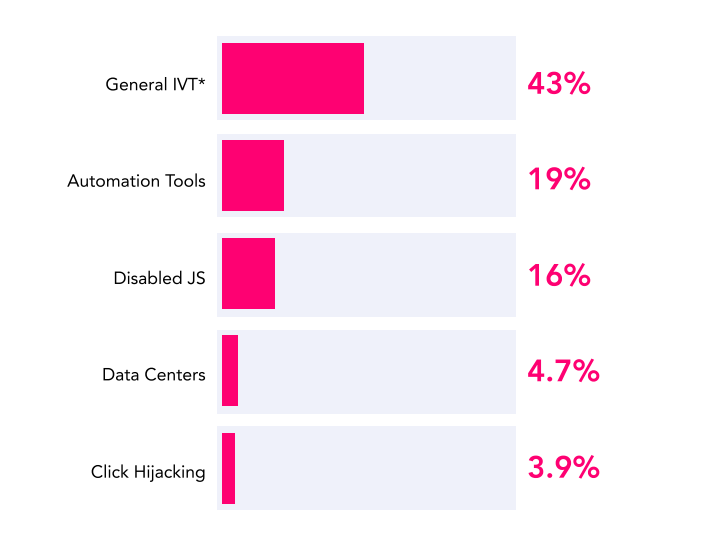
Source: Cheq
Mobile also accounts for 32% of IVT, which is the highest rate of all devices.
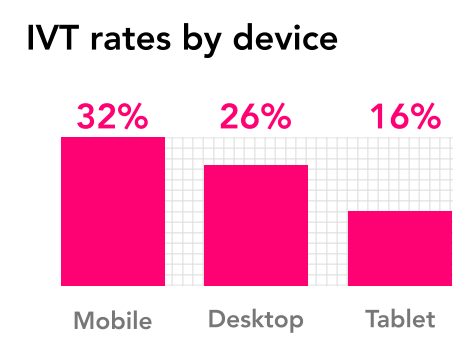
Generally, the amount of invalid traffic increases yearly, and the total cost of ad fraud is predicted to grow to $100 billion by 2023.
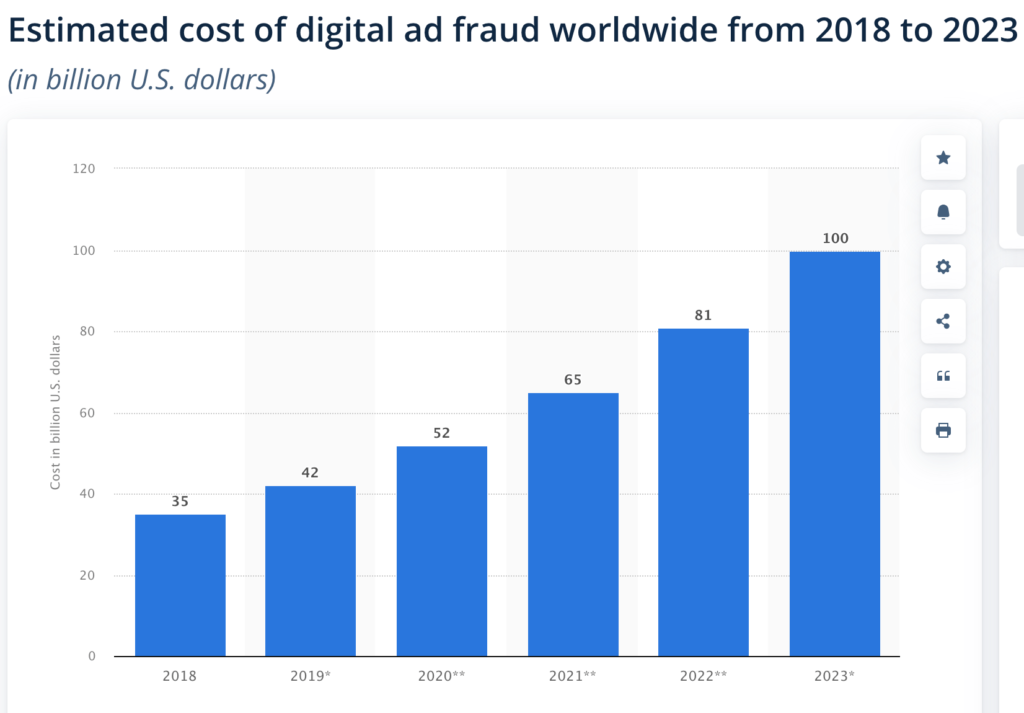
Source: Statista
Therefore, it’s important to track your website’s ad performance and block possible invalid traffic to avoid damage to your website or get advice and help from trusted ad partners.
How Does Invalid Traffic Hurt Publishers?
Invalid traffic can hurt publishers’ data, manipulate measurement analytics, and damage monetization opportunities and ad inventory value. If the website shows a pattern with high invalid traffic, the advertiser might reduce the bid or even blacklist the site.
Additionally, advertisers use DSPs, which are equipped with invalid traffic metrics, and advertising quality providers use advanced traffic quality monitoring software.
IVT can also hurt publisher accounts by imposing suspensions. One of the most frequent reasons for AdSense or AdX accounts suspension is invalid activity.
What are the tell-tale signals for invalid traffic?
There are 5 common signs of IVT:
- High bounce rate
- Low dwell time
- Multiple clicks from the same IP address
- Unexpected traffic peaks and low conversion rates
- Recurring traffic peak patterns
Although these signs alone aren’t always a result of IVT, you should keep an eye on the frequency and make regular ad performance check-ups.
If you experience a mixture of these signals and are concerned, contact your monetization provider or use ad fraud detection and prevention tools.
Intentional and unintentional invalid traffic causes
As mentioned before, there can be situations of unintentional invalid traffic causes, and often the source of this traffic is a mystery to the website owner. There are possible explanations, such as buying expired domains or getting hacked.
Purchasing an expired website domain can be a good SEO tip as the benefits include good authority, strong backlinks, similar domain name, etc.
But it can also include disadvantages such as unwanted bots and crawlers, visitors that look for the old website and increase your site’s bounce rate, and warnings about invalid traffic from Google.
In this case, the problem might be difficult to solve. Still, the first step should be investigating the source of the invalid traffic by looking at the server log files. These files give detailed insights about who and when accessed your site, or by using Google Analytics.
Another reason is getting hacked as there is a rise in malicious bot activity. According to Imperva report, bad bot traffic accounted for 27.7% of all global website traffic in 2021.
It can result from negative SEO attacks, such as content scraping and DDoS attacks. In this case, one of the ways you can avoid hackers is by changing the default login URL.


There are also cases of intentional invalid traffic, such as purchasing traffic to gain more clicks and impressions. This can generate invalid clicks from click farms, which can harm your SEO and overall reputation of the website.
Invalid clicks occur when an automated system clicks on your paid link on purpose, but it can also happen accidentally by real users.
At the end of the day, it’s better to invest your resources and time into good SEO practices and increase organic traffic than try to cheat your way into better results.
How to Detect Invalid Traffic With Google Analytics
Google Analytics has 4 key metrics that indicate possible IVT:
- Average session duration–by clicking on the “Audience” tab and navigating to “Overview”, you can see the “Avg. Session Duration”. If it’s close to 0, then most likely it’s because you’ve received lots of IVT on your site.
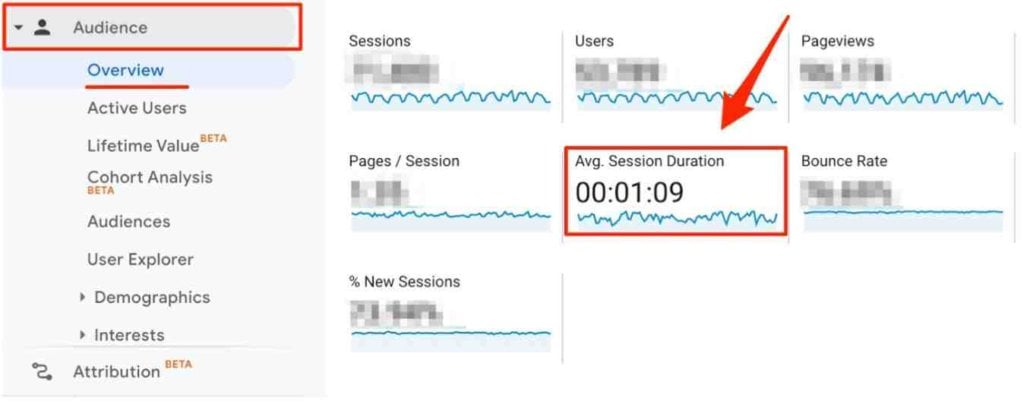
- Bounce rate–high bounce rate doesn’t always signal invalid traffic as sometimes users quickly leave pages because they don’t find the content relevant to their interest. If the bounce rate is close to 100%, it can indicate suspicious activity. The average bounce rate is around 50%.
- Traffic channels–by clicking on “All traffic” under the “Acquisition” tab and then navigating to “Channels”, you can see which of your referral traffic sources is sending bot traffic instead of real users. Typically, you can spot them with a high percentage of bounce rate and minimal average session duration.
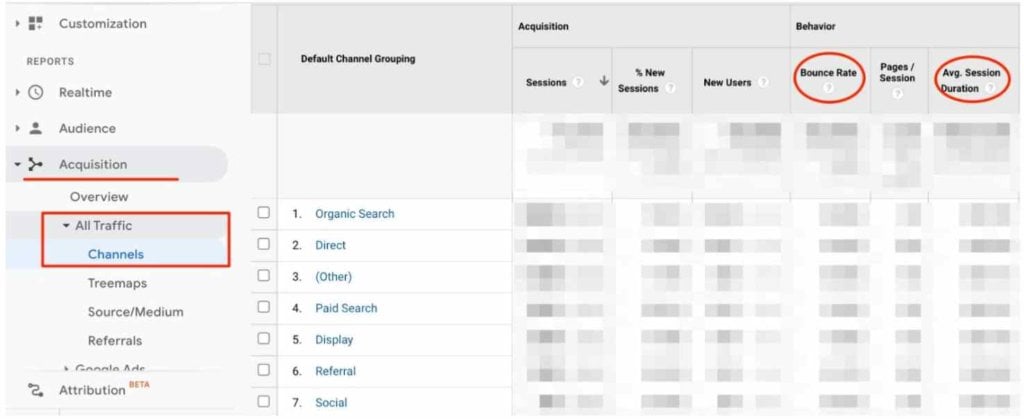
- Referral sources–by clicking on “All traffic” under the “Acquisition” tab and navigating to “Referrals”, it’s possible to track suspected fraudulent traffic and see the source where it’s coming from.
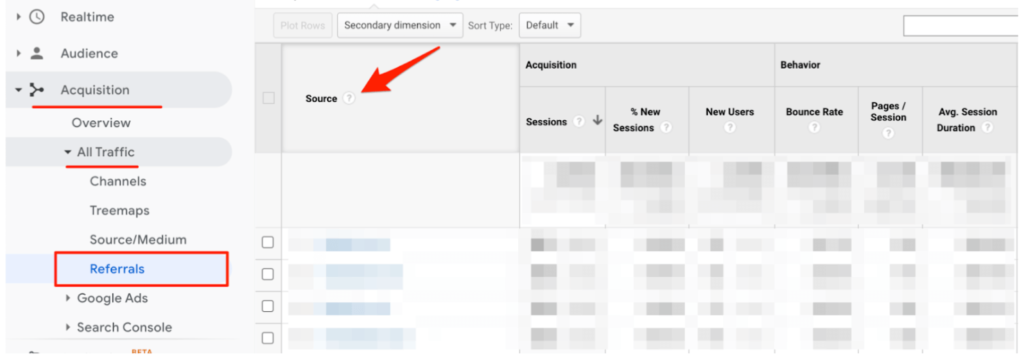
How to block invalid traffic in Google Analytics
To block invalid traffic in Google Analytics so that it doesn’t appear in your reports, you need to take these 4 steps:
- Click on the gear icon in the bottom left corner and access the “Admin” tab.

- Navigate to “View” and click on “View settings”.

- Scroll down to see if “Bot Filtering” is checked; if not, do so.
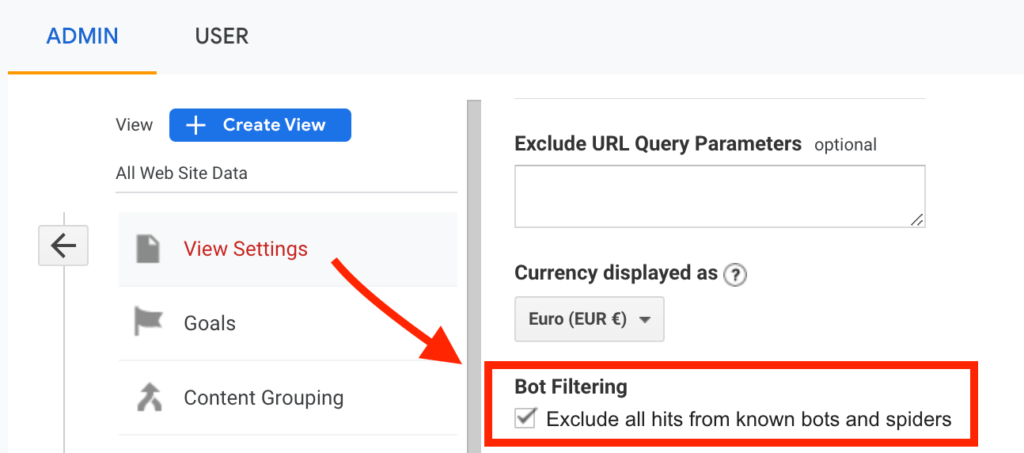
- Save settings.
Conclusion
Keep an eye on the signs of invalid traffic and avoid ad placement mistakes to ensure that you don’t harm your website’s performance and reputation. Nevertheless, putting effort into gaining more organic traffic than buying fake traffic is always a better choice for good SEO.
In case of malicious bot activity, contact your ad provider and use our tips on detecting and blocking IVT.


